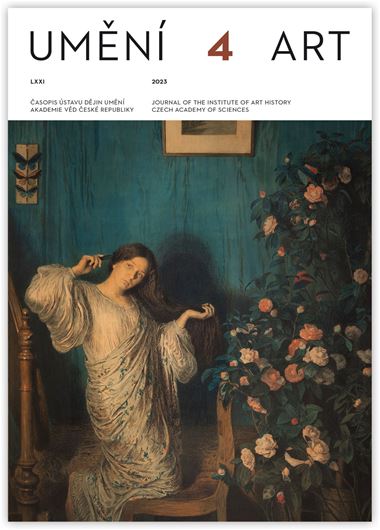Kateřina Adamcová
Umělecký profil Jana Jiřího Bendla
The impetus for reassessing the existing characterisation of J. G. Bendl was the discovery of a direct pre-figure of Bendl’s statue of St. Jude Thaddeus from St. Salvator Church of in Prague’s Old Town, which belongs to a set most discussed in the literature. Among other things, this discovery pointed out that Bendl’s manner relies on formal and expressive sources different from those offered by Roman sculpture of the first quarter of the seventeenth century. And, furthermore, that both this particular sculpture and many others are difficult to fit the terms by which Bendl’s sculptural expression has been defined up to now with: the carver’s approach to form building, indirect realism and latent retrograde Gothicism. In the search for an answer to the old-and-new question of what kind of sculptor Bendl actually was, it was first necessary to understand the context within which his art historical portrait was constructed. A fundamental part was played by the contemporary preference for the dynamic-expressive current of European Baroque sculpture, the so-called Berninism, and by the emphasis placed by Czech art history on that layer of early modern sculpture in which some realistic tendencies could be observed. The subsequent confrontation of the traditional Czech art history view of J. G. Bendl with the unpublished writing about this sculptor by J. Q. Jahn confirmed that Bendl should be ranked among artists with sculptive sensibility rather than among true-blood carvers. And also that his Italian experience was much more important for his distinctive sculptural manner than the tradition of the South German region from which his father came. Such a corrected characterisation of J. G. Bendl allows us to understand the Gothicisms in his work as a kind of deliberate historicism – a part of a very variable portfolio that includes, among other things, an antiquzing conception of sculpture, reflections on the figural expression of Michelangelo Buonarotti, or original transformations of contemporary Roman or Northern Italian sculpture. At the same time, it also corresponds better to what Bendl’s sculptural works and surviving archival sources tell us about him, in which Bendl usually appears as a confident artist with a broad outlook, capable of satisfying even the most demanding client or commissioner.
Author's email:
katerina.adamcova@ff.cuni.cz
DOI: HTTPS://DOI.ORG/10.54759/ART-2023-0402
Full-text in the Digital Library of the Czech Academy of Sciences:
https://kramerius.lib.cas.cz/uuid/uuid:b4b3dcb5-a959-41a4-893f-6332e20edfc2
< back

